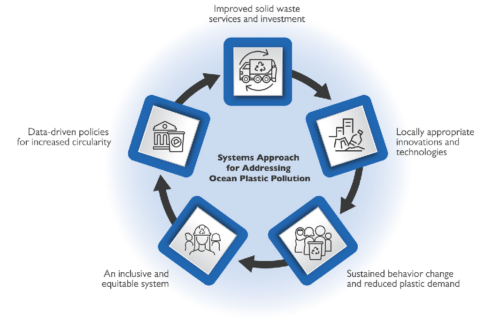The Building Blocks of a Circular Economy: USAID’S Local Systems Approach to Reducing Ocean Plastic Pollution
This brief describes each building block, outlines custom performance indicators, and provides examples to address key constraints to develop programs that use a systems approach and consider context-specific mechanisms and tools.
